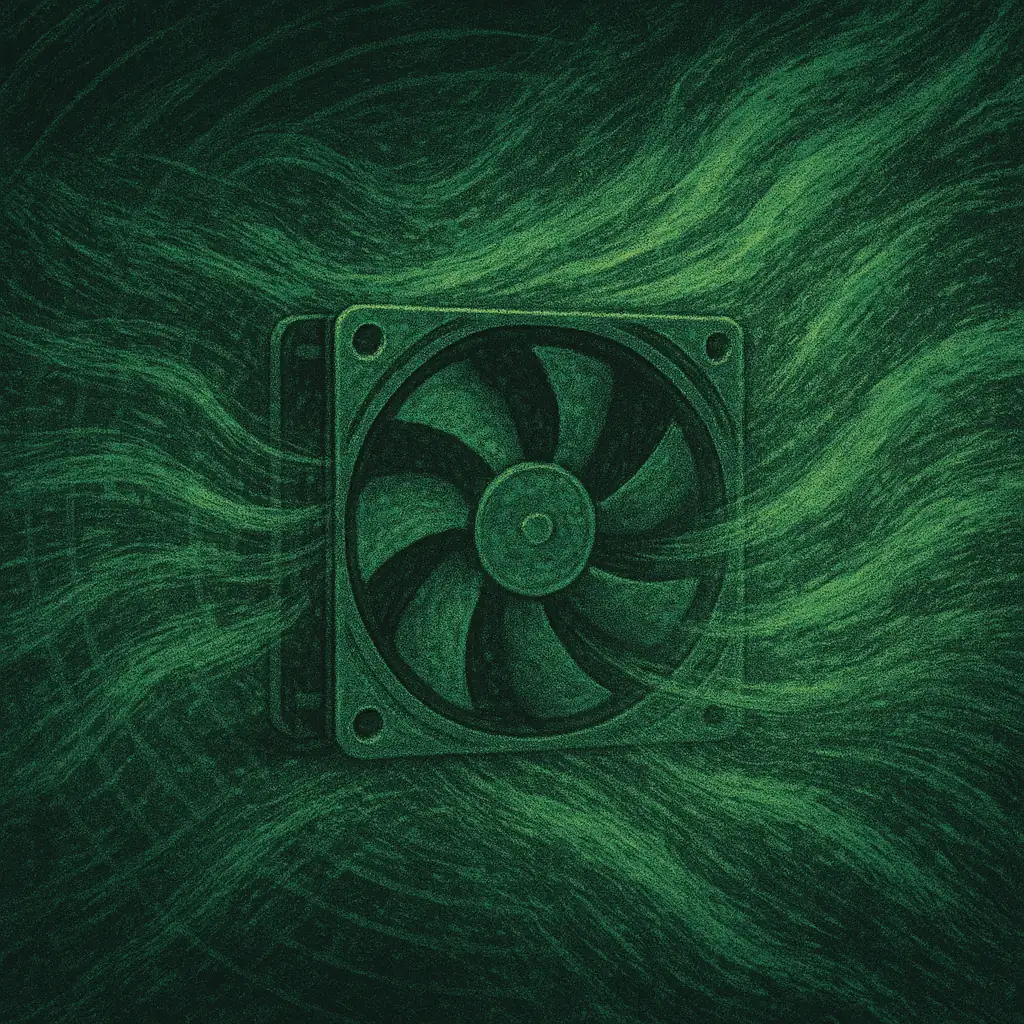Why is my computer fan so loud all the time?

Table of Contents
Could be:
- Dust buildup forcing high RPM to keep temps in check.
- Thermal paste aging; temperatures spike quickly.
- Background load from updaters, indexing, or malware.
- Aggressive fan curve in BIOS/utility; needs tuning.
- Bearing wear on older fans.
Need help? Check here: /services/repairs/
What it might be (likely causes)#
Dust & airflow restriction
Lint mats over heatsink fins make the fan work overtime. Even a thin layer can raise temps enough to push fans to max. If the system also feels warm, start here. Aging‑hardware patterns: /posts/top-problems-10-year-old-pcs/Thermal interface aging
Dry or poorly applied thermal paste increases the temperature delta from chip to heatsink, so fans ramp early and often. Background: Thermal pasteBackground load
Updaters, cloud sync, or malware keep the CPU busy, creating constant heat. If the PC is also sluggish, a general tune‑up helps: /posts/speed-up-old-laptop/Aggressive fan curve / firmware quirks
Some BIOS or vendor utilities use steep curves (quiet at idle, then sudden max). Updating BIOS/EC or retuning the curve smooths behavior.Fan bearings wearing out
Older sleeve‑bearing fans get noisy (grinding/whine) even at low RPM. Replacement is the cure. Primer: Computer fan, PWM control
Things to check (quick, safe wins)#
See what’s heating the system
Open Task Manager → Processes and Performance. If CPU stays high at idle, identify the process. If temps spike at low CPU, airflow/thermal interface is likely.Physical inspection & dusting
Power down, unplug, and shine a light through vents. If you see lint on heatsink fins or filters, clean gently. Blow across vents rather than hard into them to avoid packing dust deeper. For laptops, a proper open‑up is often required.Fan curve / firmware update
- Enter BIOS/UEFI and look for Smart/Q‑Fan controls. A linear curve with a modest slope often sounds better than a step curve.
- Install the latest BIOS/EC firmware—some updates fix late fan ramp or stuck maximums. General firmware mindset: /posts/the-art-of-making-things-boot/
Power & cooling profile
In Windows, set Power mode to Balanced. In vendor utilities, disable “Silent” modes that paradoxically cause heat build‑up → later fan surges.Thermal paste consideration
If the device is 3–5+ years old or has been hot for months, a repaste can drop temps significantly. Use a reputable paste and match pad thicknesses around VRM/memory (especially in laptops).Replace failing fans
If you hear grinding or rattling at any RPM, the fan is at end‑of‑life. Replace with equal‑size PWM fans (desktops) or the OEM part (laptops).Air path sanity
- Desktops: ensure front intakes aren’t blocked by doors/filters; maintain a front‑to‑back airflow. Tie back loose cables.
- Laptops: avoid blankets/couches; elevate the rear slightly to improve intake.
Patterns that narrow the cause#
- Fans ramp under light use, temps high → dust or paste issue.
- Fans loud at all times, temps normal → failing fan bearings or too‑aggressive curve.
- Quiet after reboot, then gradually loud → background services or telemetry.
- Short, periodic surges → steep fan curve or thermal spikes from brief CPU bursts.
If the system is also freezing or stuttering, check for disk/RAM bottlenecks too: /posts/why-does-my-computer-freeze-or-lag-randomly/
When to pause and get hands‑on help#
- Fans stay maxed after cleaning and software checks.
- Temps hit throttle limits quickly or the system shuts down under light load.
- There’s audible grinding, chirping, or wobble from a fan hub.
A bench clean‑out, repaste, and fan swap (plus curve tuning) usually returns the system to a calm hum.
Insight#
Noise is a symptom, not a feature. The fan is just reporting that heat isn’t leaving efficiently or that something keeps making heat. Fix the cause—airflow path, thermal contact, or constant load—and the acoustics improve by accident. The winning combo is boring: clean path, sane curve, healthy paste, sensible power.
Want a quieter, cooler machine in Kirksville—deep clean, repaste, or new fans tuned for your case?
See /services/repairs/.